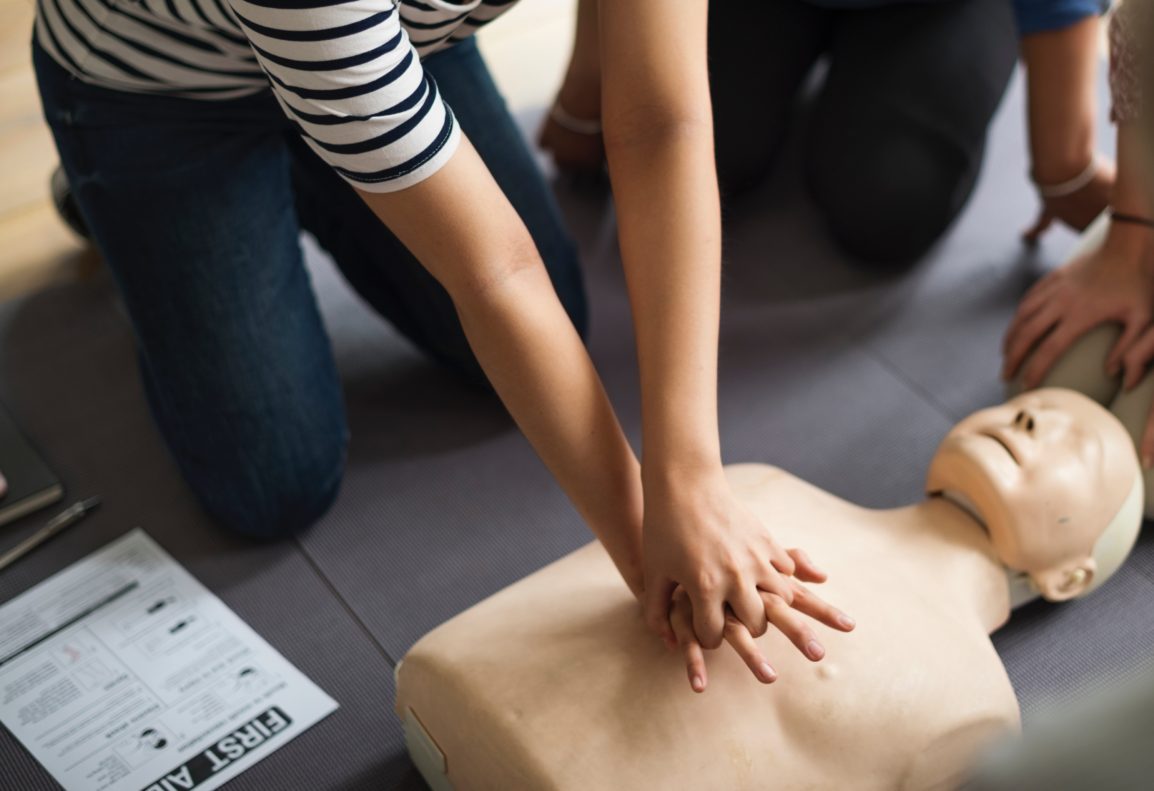Knowing what to do when your child is chocking is a valuable lesson that, hopefully, you’ll never need, but shouldn’t chance.
CPR (cardiopulmonary resuscitation), when done properly, can save a life. You never know when a child may put something in their mouth that causes them to choke or when any other emergency where they stop breathing might happen.
Simply reading the steps of performing this life-saving procedure is helpful, though it is strongly recommended that you take a course to ensure you are performing the technique properly. Click here to find classes near you.
Before you take your training class, check out these steps by medlineplus.gov to familiarize yourself on what to do.
1. Check for alertness. Shake or tap the child gently. See if the child moves or makes a noise. Shout, “Are you okay?”
2. If there is no response, shout for help. Tell someone to call 911 and get an AED if available. Do not leave the child alone until you have done CPR for about two minutes.
3. Carefully place the child on their back. If there is a chance the child has a spinal injury, two people should move the child to prevent the head and neck from twisting.
4. Perform chest compressions:
•Place the heel of one hand on the breastbone – just below the nipples. Make sure your heel is not at the very end of the breastbone.
•Keep your other hand on the child’s forehead, keeping the head tilted back.
•Press down on the child’s chest so that it compresses about one third to one-half the depth of the chest.
•Give 30 chest compressions. Each time, let the chest rise completely. These compressions should be fast and hard with no pausing. Count the 30 compressions quickly: “1,2,3,4,5,6,7,8,9,10,11,12,13,14,15,16,17,18,19,20,21,22,23,24,25,26,27,28,29,30, off”.
5. Open the airway. Lift up the chin with one hand. At the same time, tilt the head by pushing down on the forehead with the other hand.
6. Look, listen, and feel for breathing. Place your ear close to the child’s mouth and nose. Watch for chest movement. Feel for breath on your cheek.
7. If the child is not breathing:
•Cover the child’s mouth tightly with your mouth.
•Pinch the nose closed.
•Keep the chin lifted and head tilted.
•Give two rescue breaths. Each breath should take about a second and make the chest rise.
8. After about 2 minutes of CPR, if the child still does not have normal breathing, coughing, or any movement, leave the child if you are alone and call 911. If an AED for children is available, use it now.
9. Repeat rescue breathing and chest compressions until the child recovers or help arrives.
If the child starts breathing again, place him or her in the recovery position. Keep checking for breathing until help arrives.
DO NOT:
•If you think the child has a spinal injury, pull the jaw forward without moving the head or neck. DO NOT let the mouth close.
•If the child has signs of normal breathing, coughing, or movement, DO NOT begin chest compressions. Doing so may cause the heart to stop beating.
•Unless you are a health professional, DO NOT check for a pulse. Only a health care professional is properly trained to check for a pulse.

